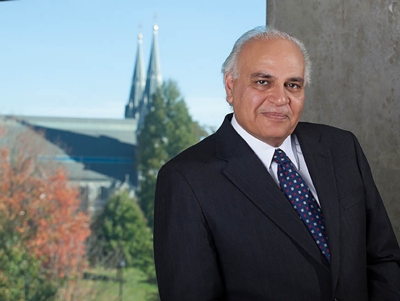Villanova’s Center for Advanced Communications Takes Lead on $650,000 NSF Study

Professor Moeness Amin, PhD, director of Villanova University’s Center for Advanced Communications
Professor Moeness Amin, PhD, director of Villanova University’s Center for Advanced Communications (CAC), is the principal investigator for a $650,000 EARS (Enhancing Access to the Radio Spectrum) project funded by the National Science Foundation’s Division of Astronomical Sciences. A collaboration between the CAC, Temple University and Embry-Riddle Aeronautical University, research is being conducted on techniques to protect certain parts of the radio spectrum from human-induced radio frequency (RF) activity. Titled “Strategies for Co-existence of Radio Telescope Arrays with Broadcast Stations and Wireless Communication Systems,” the objective of this three-year study is to enable effective use of a broader RF spectrum for communications, while minimizing data loss to passive services such as radio astronomy and earth exploration remote sensing.
With rapid increases in technological innovation, demand for wireless broadband has soared. This demand would require the utilization of frequencies over a bandwidth that has been traditionally slated for radio telescopes. This frequency infringement may interfere with reception and interpretation of astronomical data and, as such, compromise the search and discoveries of extraterrestrial intelligence. The project puts forward coexistence strategies where wireless users cause minimum interference to astronomical observations.
To suppress or at least significantly mitigate radio frequency interference (RFI), techniques for both cooperative and non-cooperative RFI sources are being studied. Cooperative interferences originate from authorized secondary users and strive to reduce their effects on the telescope array through agreeable transmission/receiving strategies, whereas non-cooperative RFIs originate from uncontrolled emitters where no transmit strategies can be enforced and there is no prior knowledge of the emitters’ transmit power, spectrum, modulation scheme, duty-cycle or locations. The distinction in signal characteristics between astronomical events and those of digital communications, however, enables effective cooperative as well as non-cooperative interference identification and suppression. This project has the potential to advance spectrum sharing and utilization and therefore enhance the future capacity for U.S. industry and academic institutions in this area of research and development.
